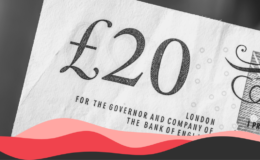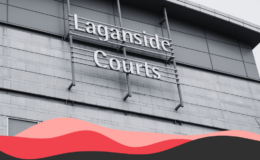- The Irish Free State came into being on 6 December 1922 and, given the drafting of various pieces of legislation, technically included Northern Ireland within its jurisdiction.
- However, NI was allowed one month to say it wanted to remain in the Union rather than be part of an independent Ireland.
- Stormont made the relevant address on 7 December 1922 and, while it may have been a formality, this process still took place.
On 6 December, Ireland’s Tánaiste Leo Varadkar said:
“Article 12 of the Treaty [the Anglo-Irish Treaty of 1921, which created the Irish Free State] created a legal and constitutional anomaly. Northern Ireland was already in existence but was also included within the jurisdiction of the Free State and given one month to opt out. So on 6 December 1922 Northern Ireland is technically part of the Free State for one day until that opt out is exercised, but is also still in existence in its own right – so it has a double constitutional identity and existence for 24 hours.”
This is technically accurate, according to both the wording of the Treaty and the process which played out to create modern Northern Ireland.
Treaty
The 1921 Anglo-Irish Treaty was negotiated between the UK Government and representatives of Sinn Féin. It created a new dominion within the British Empire called the Irish Free State. The treaty was signed on 6th December 1921 and ratified by both sides in the months thereafter.
An entity known as “Northern Ireland” was actually created one year earlier, as part of the 1920 Government of Ireland Act, which established two separate parliaments on the island of Ireland.
Process
For this claim, the relevant sections of the Anglo-Irish Treaty are articles 11 and 12, which set out what was to happen to Northern Ireland upon the establishment of the Free State.
They gave the Parliament of Northern Ireland one month – which was sometimes referred to as the “Ulster month” – to pass a resolution opting out of the new Irish Free State.
On 5th December 1922, the Irish Free State Constitution Act 1922 gave legislative effect to the provisions in the Act. On the same day, the Irish Free State (Consequential Provisions) Act 1922 was also passed amending the Government of Ireland Act so that its provisions only applied to Northern Ireland.
On 6th December 1922, the Irish Free State came into existence. King George V issued a proclamation adopting the Free State Constitution, as well as discussing Northern Ireland’s opt out:
“If before the expiration of the said month, an address is presented to His Majesty by both Houses of the Parliament of Northern Ireland to that effect, the powers of the Parliament and the Government of the Irish Free State shall no longer extend to Northern Ireland, and the provisions of the Government of Ireland Act, 1920, (including those relating to the Council of Ireland) shall so far as they relate to Northern Ireland, continue to be of full force and effect,”
On 7th December 1922, both houses of the Northern Ireland Parliament passed the necessary address opting out of the new Irish Free State.
So, quite clearly, Northern Ireland was part of the Free State for one day.
Or maybe not.
Contested
Some experts contend that Northern Ireland was not really part of the Free State, even briefly.
David Torrance is a Clerk in the House of Commons Library. He recently spoke with the BBC’s Mark Simpson outlining why he believes that NI was never part of the new, independent Ireland, saying:
“Historians disagree on this point but I think if you look at the clearly expressed wording – or not so clearly, in some cases – of the Anglo-Irish Treaty from 1921 and if you look more deeply at what people were saying at the time in Parliament, in Dublin and in Belfast, and also if you dig even more deeply and go into the archives, it’s quite clear that not even briefly was Northern Ireland part of the Irish Free State. The Government of Ireland Act of 1920 which created NI was still of full force and application according to the Treaty, and that was to be the case for one month after the creation of the Irish Free State.”
Mr Torrance also wrote an article for the House of Commons Library, published earlier this month, about the background to Irish independence, and the processes which brought it about.
Formalities
Dismissing the technical manoeuvres that saw Northern Ireland remain in the Union while the rest of Ireland became independent as mere formalities is a perfectly arguable position. However, what is indisputable is that those formalities actually took place.
While both the incorporation of Northern Ireland into the new Irish Free State – and then NI’s official opt out of that state a day later – might have been mere formalities cementing the current constitutional position, those formal processes were still followed. Therefore, Northern Ireland was technically part of the Irish Free State for a day – or even perhaps two.




